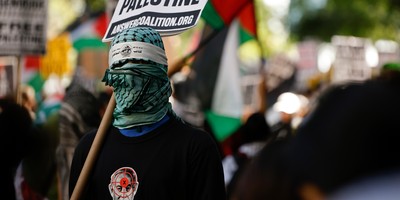President Trump signed two Executive Orders on January 8 instructing the Interior Department to streamline the location of broadband infrastructure for the rural U.S. on federal properties. Now, if the FCC would only follow in that same spirit.
The FCC has authority over licenses for electromagnetic spectrum for communication over the airwaves. That includes TV and radio broadcast stations; desktop computers, laptops or tablets communicating over the internet through Wi-Fi; cellphones communicating through satellites; military communications by various means; and medical devices monitoring patients for doctors and hospitals.
Under the Radio Act of 1912, the FCC is authorized to license spectrum bandwidth in the “public interest, convenience, and necessity.” With so many big money interests fighting over government managed limited spectrum airwaves over the past century, some inefficiencies have inevitably resulted, leaving some usable airwave frequencies underutilized. (That would never have resulted if the spectrum were allocated as property rights in a decentralized market, rather than as central planning licenses from a central government bureaucracy).
The underutilized spectrum channels are known as white spaces. Microsoft is promoting the Airband Initiative, which would be entirely private-sector financed to provide universal broadband to everyone through such currently unused “white spaces,” including the 23.4 million Americans in rural areas that do not have any broadband access now.
Using just three currently unused white space channels around the 600 megahertz bandwidth, the Airband Initiative can provide the lowest cost broadband to rural areas through what is called “Super Wi-Fi,” because it can penetrate through wood, forests and walls like TV broadcasts. This is a not-for-profit venture for Microsoft. Rather, Microsoft will contribute a few dozen of its patents for “White Space” broadband technology to any participating company free of any royalties.
Recommended
Microsoft has proved this technology works by using it to provide broadband to over 185,000 people in 20 countries around the world. The White Spaces would not be licensed to any company exclusively, but would be available for use by everyone for broadband, just like Wi-Fi is today. Since these White Spaces are devoted to “public use” today, the government would not lose any revenue in reserving them for use by the Airband Initiative.
Congress has shown support for the Initiative through a bipartisan letter to the FCC circulated by Rep. Kevin Cramer (R-ND), signed by over 40 House members, including House Freedom Caucus Chairman Mark Meadows (R-NC), House Republican Conference Chairwoman Cathy McMorris Rodgers, Rep. Suzan DelBene (R-CA), and Rep. Peter Welch (D-VT).
The Initiative is opposed by the National Association of Broadcasters (NAB) out of fear it would not leave enough room for expansion by Low-Power Television rural broadcasters. But broadcasters already control 92% of the broadcast spectrum, accounting for 210 MHz out of 228 MHz in TV bandwidth. White Spaces account for just 18 MHz of the spectrum.
That would mean 35 nationwide channels reserved for broadcasters, guaranteeing channels for every full power broadcaster and every lesser power Class A station. Only three channels would be reserved for universal broadband, assuring there would be one channel at least in every locality usable for Wi-Fi services providing personal communication by voice, video, text, and streaming media which can be used for news, entertainment, learning, two-way interactive medicine, and agricultural sensors.
Using these limited White Spaces for these broadband purposes would not interfere with any current broadcasters or any other licensed use of the electromagnetic spectrum. It would even leave room on the spectrum for low power television broadcasters to grow, though Wi-Fi broadband is recognized as more valuable in currently unserved rural areas than more low power television stations.
Can you spell “win-win?” No wonder this universal broadband initiative has bipartisan support. Now President Trump’s FCC needs to follow the spirit of his Executive Orders, and cooperate with the necessary spectrum licensing.
Peter Ferrara served in the White House Office of Policy Development under President Reagan, and as Associate Deputy Attorney General of the United States under President George H.W. Bush.

























Join the conversation as a VIP Member